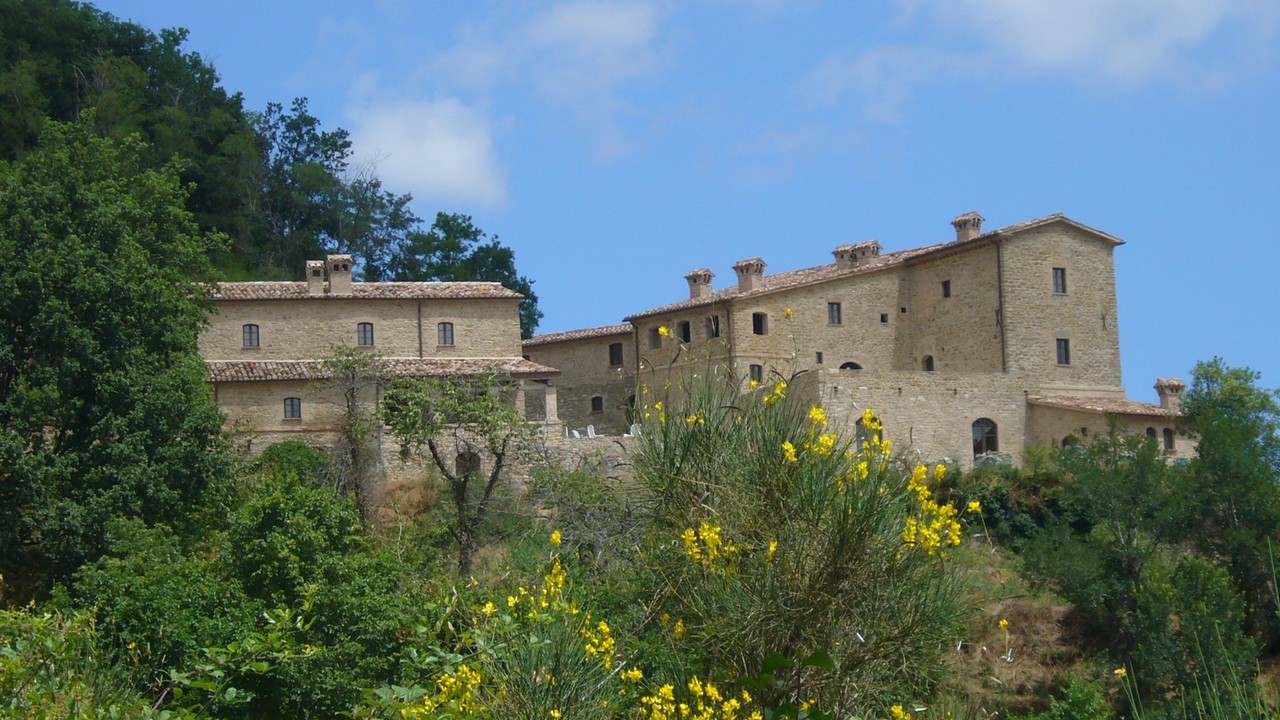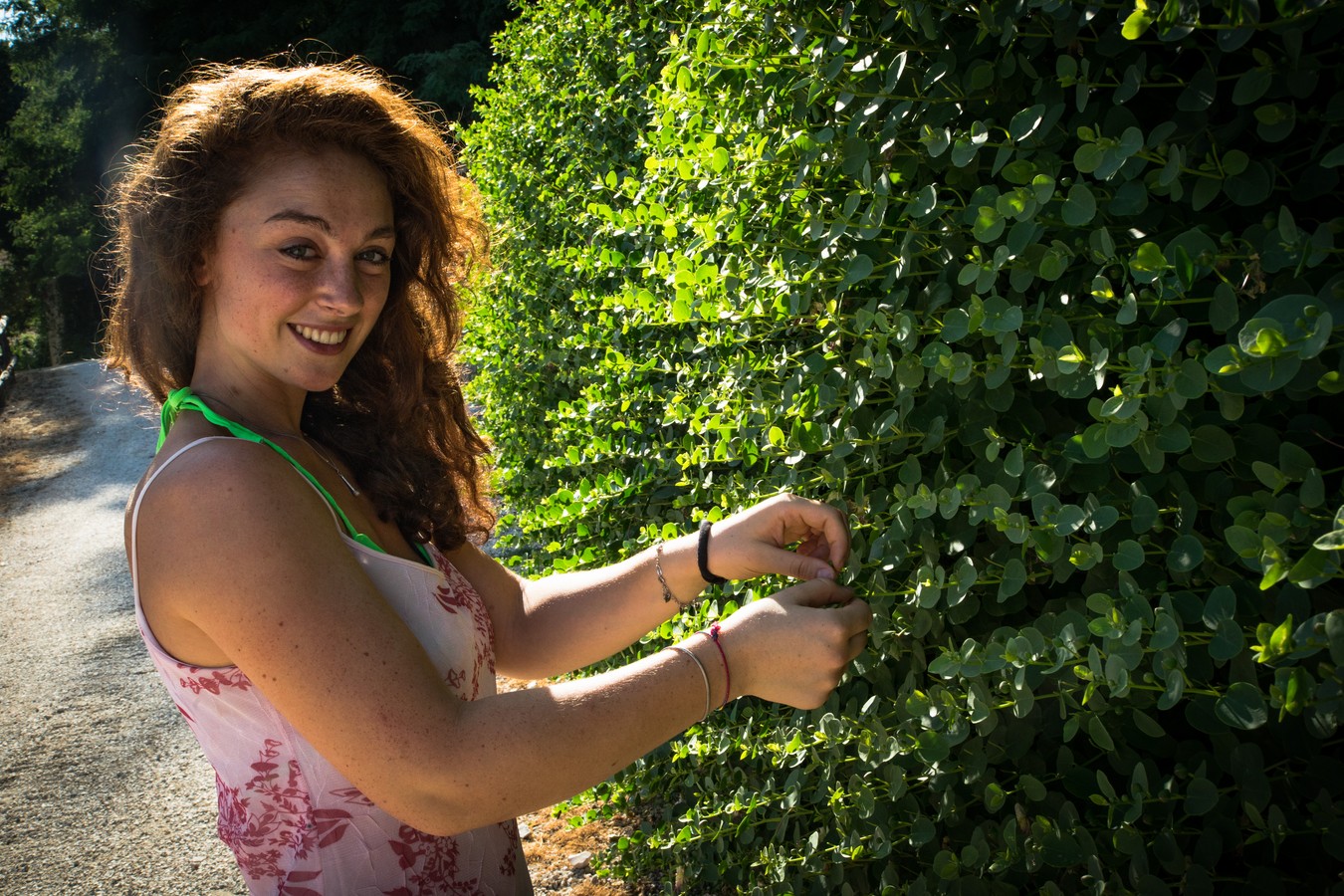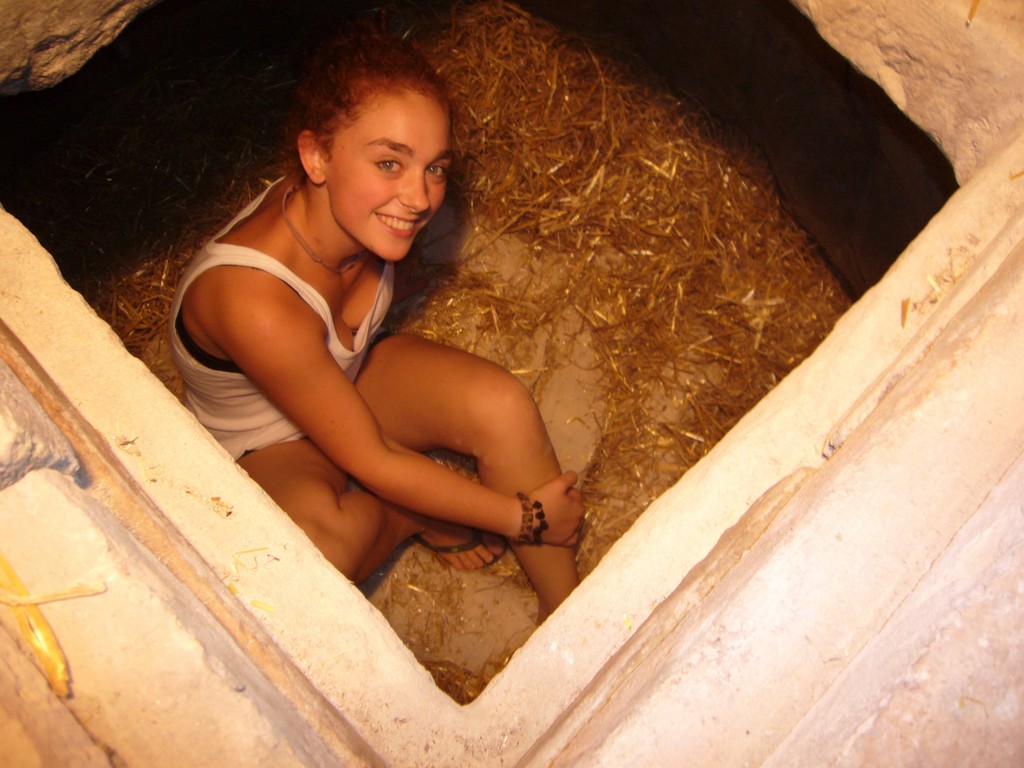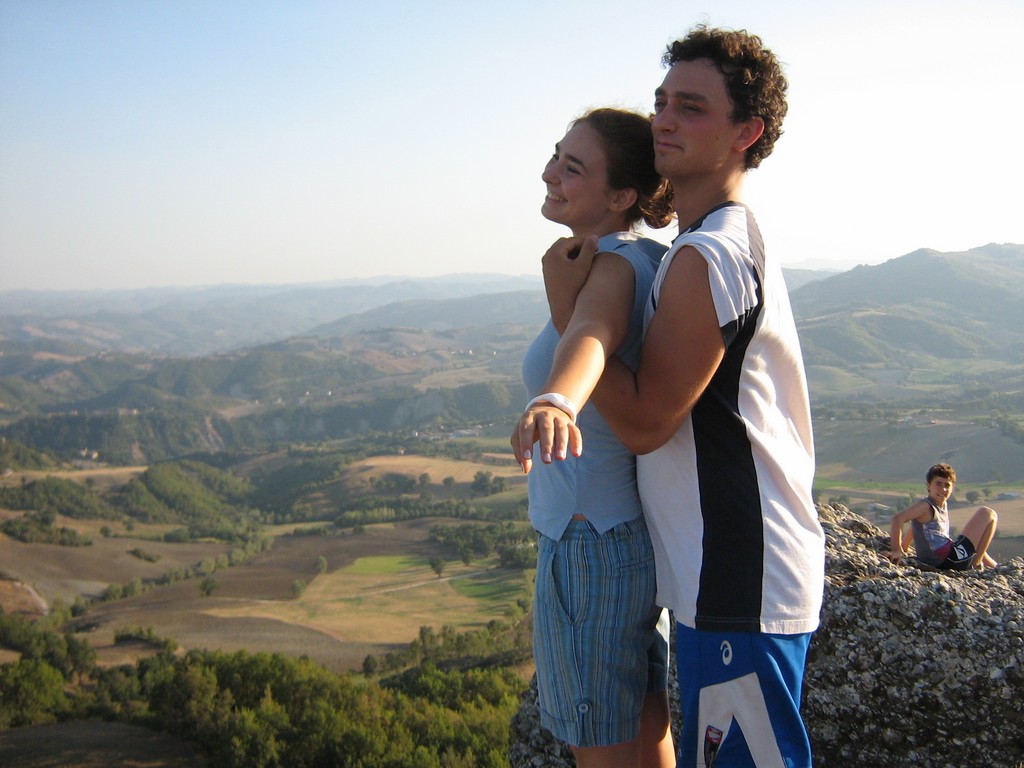The village is made up of three main groups of buildings, one of which in turn consists of various adjacent structures, built around the watchtower of the 12th-13th century and the adjoining tower house (14th century), in addition to other fifteenth-century buildings. The primordial buildings and the tower are placed on a spur of rock that constitutes the foundations to all effects. Still there are the fortification walls around the village that surround this and the spur as in a narrow embrace so that the houses develop, joining together, crossed by an imposing stone staircase that allows access to the various rooms and rooms. At the top of the steps of the village, just where the foundations of other buildings were found, the ancient wall that supported them was rebuilt and above it was built a panoramic swimming pool, just as if it were for location and capacity , of the ancient cistern that perhaps in ancient times gave the name to the site.
Although the tower is currently the oldest building in its entirety, certainly some structural changes to walls and other signs reveal traces of previous settlements whose origins perhaps date back to Roman times, when the village was a thriving farm, where they were preserved, in ditches dug into the sandstone and recently rediscovered, the seeds, the wheat and every other thing the earth offered. The very name of Cisterna indicates a toponym of probable Roman origin, very widespread in Italy and attributed to sites with water deposits.
The tower, with an irregular pentagonal base that developed at least one floor in height beyond the current level, appeared to be at the center of a guard and signaling system on the perimeter of entry from the south towards the Montefeltro, a land formerly disputed by the Malatesta of Rimini and the Dukes of Urbino. In that period in which there were numerous local conflicts and infighting, the tower of Cisterna was probably part of a defensive and guard system, being able to communicate on sight with the tower of the castle of Macerata di Montefeltro (now Macerata Feltria) or that of Certalto or with the Colle della Faggiola on which a tower is thought to have existed and whose name made use of an illustrious figure such as Uguccione della Faggiola (disputed birth between the municipalities of Monte Cerignone, adjacent to ours, and Casteldelci).
The settlement subsequently developed with a “Casa Torre” (14th-15th century) built close to the tower with which it formed, together with the adjoining city walls, a larger building that was certainly more defensible against raids and looting than still raging in the territory. Later the small settlement developed into a probable castrum, perhaps of some local lord, up to the events that led to the defeat of Sigismondo Malatesta by Federico da Montefeltro, with the acquisition of the territory within the Duchy of Urbino.
Regained a certain political tranquility, the village undergoes an important restructuring, becoming the residence of some court dignitary or illustrious personage whose identity is still unknown, who starts a radical restructuring of the site, obtaining more noble residential environments and expanding the rooms intended for to the conservation and transformation of the products of the earth, in addition to those destined to stables. It is from that period a notarial deed (1520) in which we speak of “Villa Cisterna”, an attribute which is to be understood as referring to a noble settlement as could be understood in Roman times, with its own important agricultural activity such as to hypothesize that the village could be one of the rare fortified farms.
The subsequent history follows the events of the Della Rovere and therefore of the definitive acquisition by the State of the Church, up to being abandoned by the local lords, fortunately not always following the vicissitudes of most of the 150 castles surveyed in the Montefeltro, which were in partly demolished by local populations to derive building material for new settlements (see on all the Castello di Montecopiolo or that of Pietracavola), but certainly it returned slowly and definitively to its function of rural residence, still maintaining its primordial medieval features. Many people lived in the village so that at the beginning of the 20th century there were about 90 inhabitants. In fact, the countryside was widely inhabited so much that since the advent of the Kingdom of Italy, a large schoolroom had also been created inside the village, which also gathered children from the nearby villages. It was therefore a place lived and frequented also for the presence of water to which the inhabitants of the area drew, this being often disseminated yes of water sources, but often sulphurous.
Life has always been spent harmoniously and simply in the village of Cisterna, as the local elders remember, always ready to celebrate any event by dancing in the wide yard after, for example, harvesting or threshing.
Now, after a few decades of neglect, the village has regained its life thanks to the Gallerani family which, really abandoning the big city and the more comfortable jobs it offers, has it entirely and in its own hand prized restored and furnished, with attention and refinement in the attention to detail, in order to restore the original features and sensations. It seems impossible but, in addition to the spouses Mario and Stefania, also their four children Michele, Lucia, Elena and little Matteo, tried first in the project and then also in the realization, bringing back the walls, the interiors (all in stone sight) and also the furnishings, to that originality that has preserved its beauty and antiquity.
In short, the feeling you get upon entering the village is to cross the threshold of time and immerse yourself in the past, in an atmosphere where beauty and hospitality were the most important characteristics.




























